Fantasy Football 2025: WR Luther Burden III’s player profile

2YNP07P Missouri wide receiver Luther Burden III (3) sprints downfield for a pass reception against Mississippi State in the second half of an NCAA college football game, Saturday, Nov. 23, 2024, in Starkville, Miss. (AP Photo/Rogelio V. Solis)
By
- Luther Burden III is the most versatile wide receiver in the class: While other receivers might be stuck in a particular role in an offense, Burden can line up anywhere and maintain productivity.
- Burden lands in a crowded Chicago Bears receiving room: Chicago invested a large contract on D.J. Moore and top-10 picks on Rome Odunze and Colston Loveland, which could make it hard for Burden to become a priority.
- Final chance to claim 25% off PFF+: Use code DRAFT25 and unlock access to player grades, fantasy tools and the 2025 Draft Guide
Estimated Reading Time: 5 minutes

PFF’s Fantasy Football Player Profile series delivers the most in-depth fantasy football analysis available for the 2025 season.
Using PFF’s exclusive data, we evaluate player performance, competition for touches and how teammates and coaching staffs will impact each player’s fantasy football outlook.
Last updated: 7:15 a.m. Tuesday, April 29
Click here for more draft tools:
Player performance
Burden has spent the last three seasons as one of Missouri‘s top two wide receivers, and the previous two played out of the slot. In 2023, he earned the third-highest receiving grade among Power-Five receivers, behind Malik Nabers and Malik Washington but ahead of Marvin Harrison Jr. and Rome Odunze. This included a top-five yards-per-route run figure, just ahead of Ladd McConkey.
Burden’s 2024 numbers weren’t nearly as strong. Reasons have ranged from injuries to general declines in the Missouri offense. The Tigers’ offense was among the most run-heavy in the SEC, utilizing the second-most running plays in the regular season compared to a below-average number of passing plays. That limited Burden’s routes relative to some other receivers. On a per-play basis, he remained relatively strong. His separation rate over the last two years was the best among the top five receivers in the class. Our draft guide focused on how well-rounded of a wide receiver he was, his capability to play every position and that his biggest weakness revolved around his blocking ability.
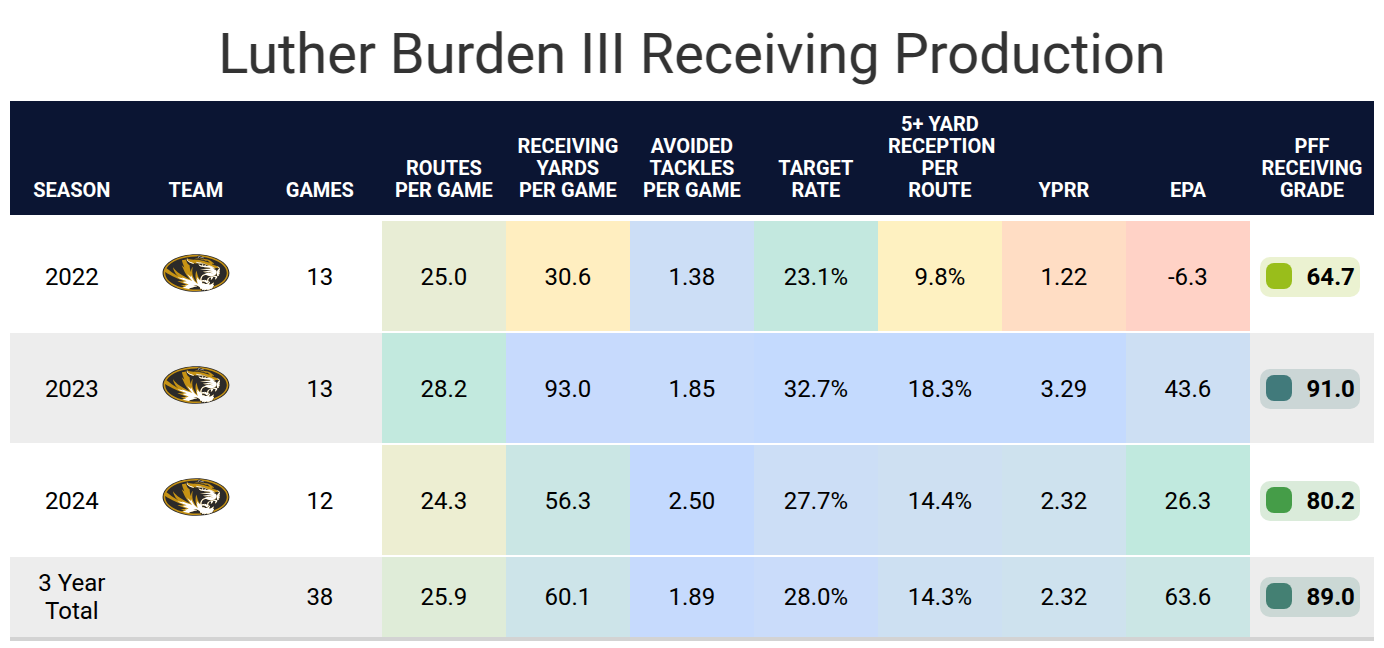
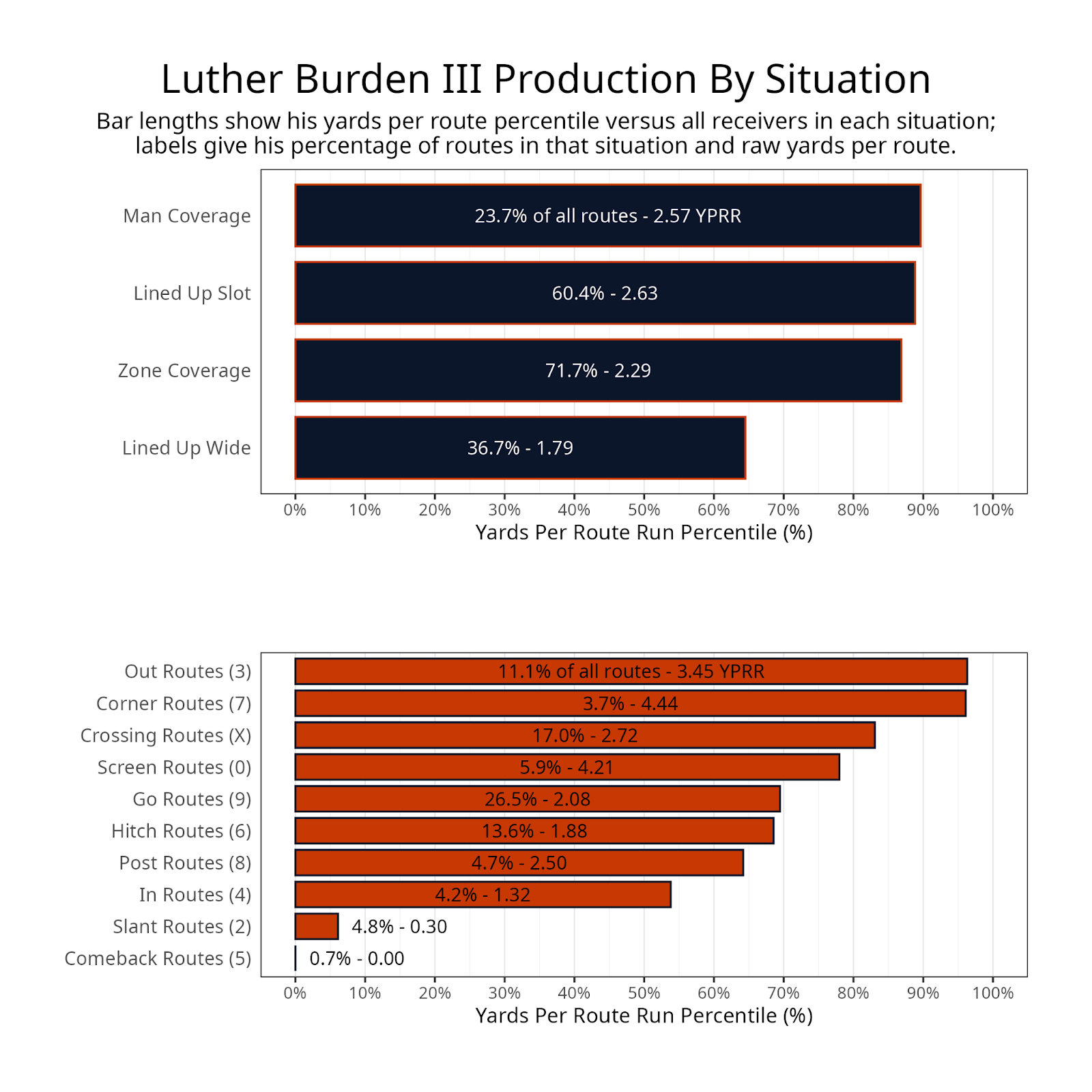
Projected role
Burden spent his college career primarily playing out of the slot as a low-average depth of target receiver. He joins a Chicago Bears team with D.J. Moore and Rome Odunze, who have spent most of their careers on the outside. Odunze played 33% of his snaps from the slot last season, while Moore has never played more than 31% of his snaps from the slot. The Bears made two free agent additions who have primarily played out of the slot in Olamide Zaccheaus and Devin Duvernay. Still, both were signed to low one-year contracts, and Burden should surpass both on the depth chart relatively quickly.
It is difficult to trust a wide receiver, for fantasy purposes, if they are only playing out of the slot. For example, Khalil Shakir was the Buffalo Bills‘ best receiver last season, catching passes from the league MVP. He mostly played in three-receiver sets and finished 37th in fantasy points per game. Burden would need to beat out Rome Odunze. On one hand, Odunze was a top-10 pick, but he also underperformed as a rookie and was drafted by the past regime.
There is also a question about how many targets Burden will receive in a very crowded receiving room. D.J. Moore is a solid WR1, while Odunze and rookie tight end Colston Loveland were selected with top-10 draft capital. Burden may finish fourth on the team in targets.
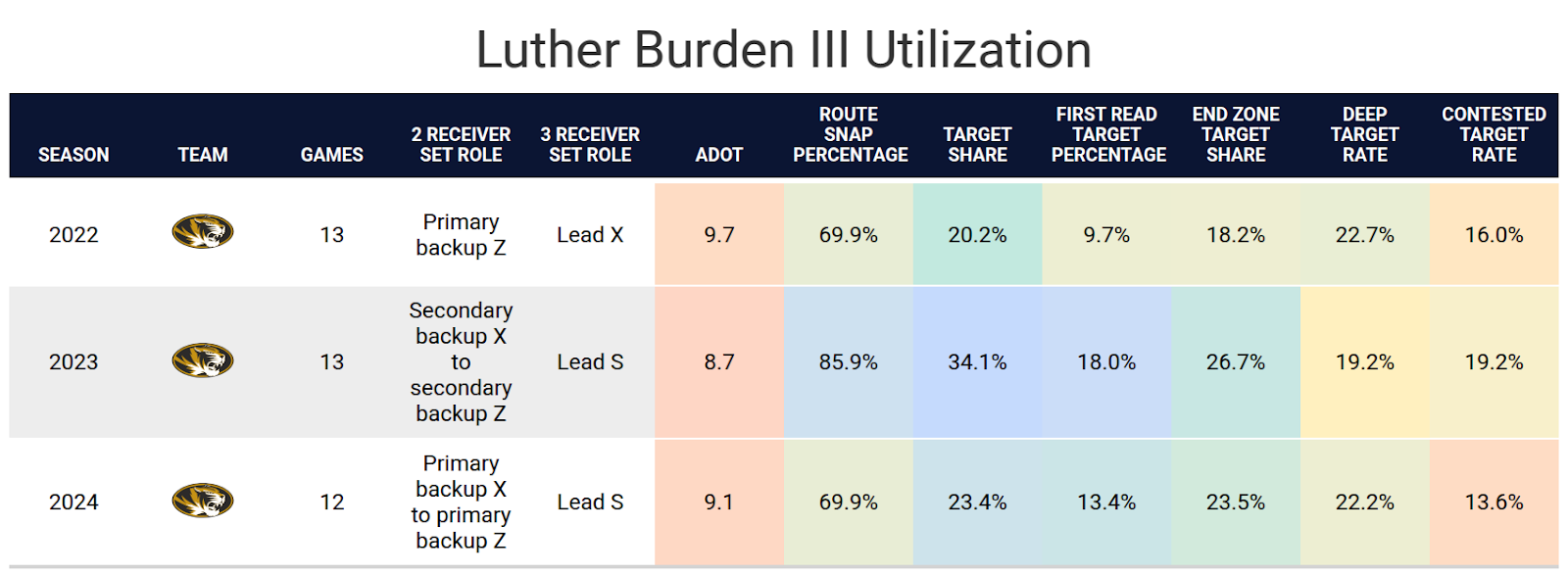
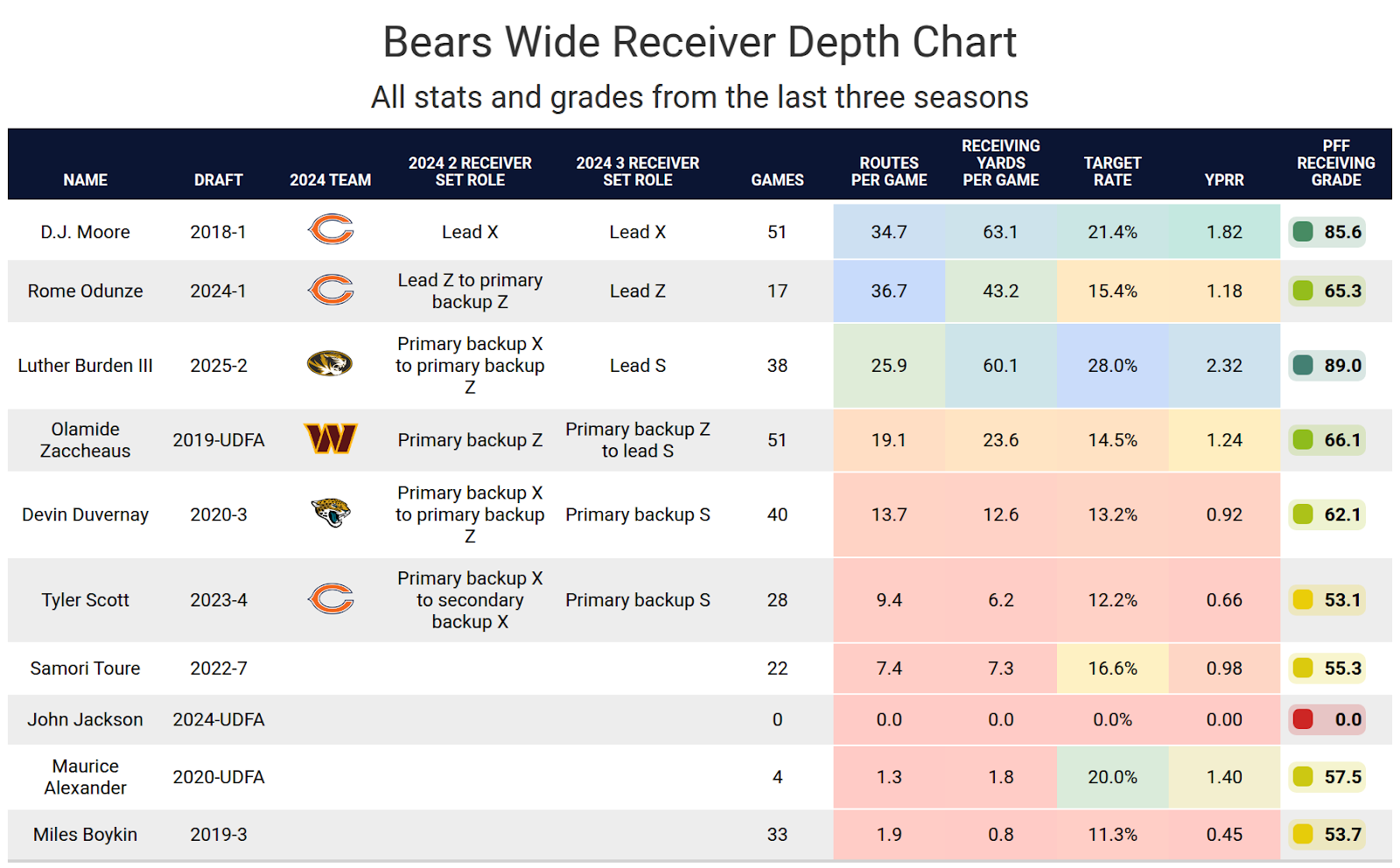
Impact of teammates
The big reason for optimism about the Bears’ passing game is Ben Johnson. While he consistently runs more than the average offense, his offenses run a lot of plays and score a lot of points. The focal point of his passing game with the Lions was slot receiver Amon-Ra St. Brown, and Burden is the most likely receiver to fill that role. However, St. Brown was also playing consistently in two-receiver sets, and his offenses stayed in two-receiver sets more often than most teams.
All optimism on the offense hinges on Caleb Williams’ development. Williams had three games this season with an offensive grade above 80.0, but ended the season with a passing grade below 60.0 in five of his final six games. The former first overall pick has an entirely re-worked offensive line and multiple new receivers to throw to, so he’s being given every opportunity to succeed, but there is no chance Burden becomes fantasy-relevant as a rookie unless Williams takes a step forward.
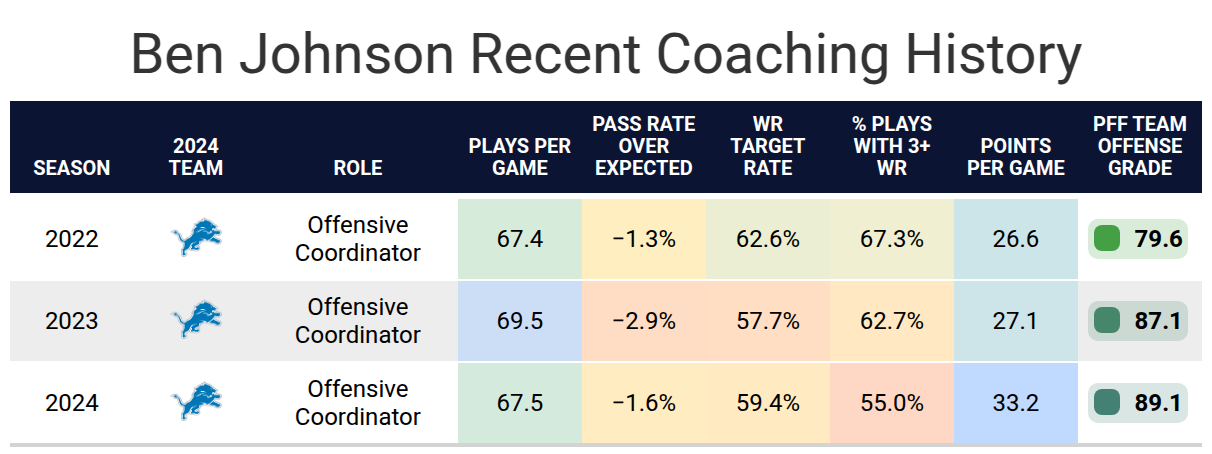
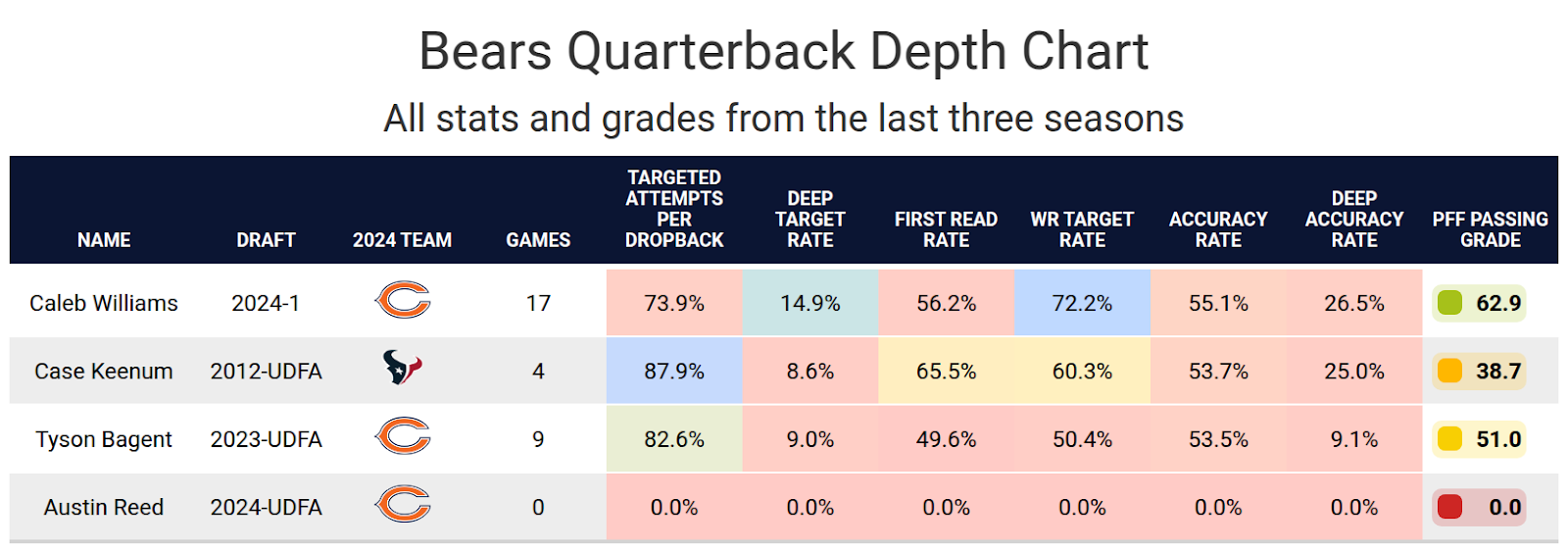
Bottom line
Burden was among the most talented wide receivers in the 2025 draft class but landed on a team with several other options in the passing game. If he can surpass others on the depth chart, he may be Ben Johnson’s new version of Amon-Ra St. Brown. If he doesn’t surpass others in the target pecking order, he might not be worth rostering in fantasy leagues as a rookie by the end of the season.
Footnotes
- Statistics in tables and charts were chosen based on their ability to predict future fantasy performance on a per-game or per-opportunity basis or to describe the player relative to others at the same position.
- “Opportunities” are defined as passing dropbacks, rushing attempts and routes run as a receiver.
- Numbers are provided either by season or based on the past three years. For rookies, only college statistics are included. For non-rookies, only NFL statistics are considered, regardless of whether they played in college within the previous three years.
- As college competition is easier than NFL competition, most rookies are likely to see a decline from their historical numbers.
- Only FBS data is considered for college players and comparisons.
- Kneel-downs are removed from rushing data to provide cleaner quarterback rushing rate statistics.
- The table colors in this article range from blue (indicating good/high) to red (indicating bad/low).
- All percentiles and color codings compare the given player to others with a high sample of opportunities. Generally, the cutoff is one-third of the possible opportunities in the sample. If a player does not meet the threshold, they are still included in the comparison, though their results may appear better or worse than expected due to the smaller, less predictive sample size.
- Information on utilization classifications and their importance can be found here for running backs, wide receivers and tight ends.


